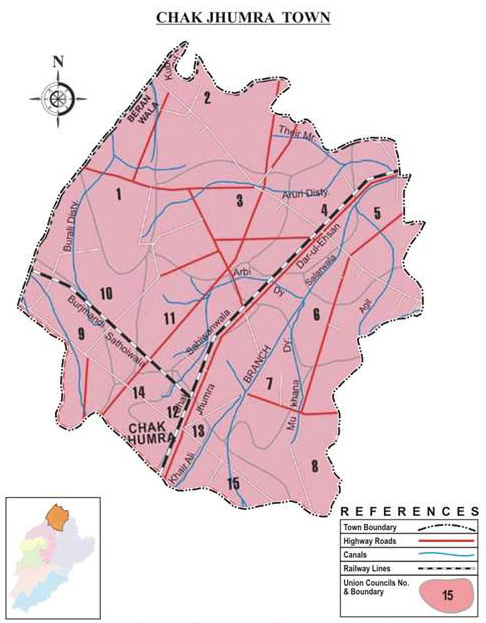|
Bhaiwala
Bhaiwala is a village in Faisalabad, Pakistan. It is also officially known as 202 R.b Bhaiwala. Bhaiwala is one of the most developed villages in Faisalabad and has a population of nearly 40,000. It was known as talagarh before its name was changed to Bhaiwala The neighboring villages of Bhai Wala are Ghona, Gatti, Chak Jhumra. Some people think that Gatti and bhaiwala are two different places but administratively both are one called 202 R.b Bhaiwala or simple Bhaiwala.See Geography of Faisalabad District http://www.lawsofpakistan.com/faisalabad-geography-city-district-government-towns-of-faisalabad/ Notable people *Mahmud Ahmed Lieutenant General Mahmud Ahmed ( ur, ; b. 1944) is a retired three-star rank army general in the Pakistan Army who served as the Director-General of the Inter-Services Intelligence from 1999 to 2001. He played a crucial role in sponsorshi ... and * Faseeh-ur-rehman CA belonged to Bhaiwala References Villages in Faisalabad District ... [...More Info...] [...Related Items...] OR: [Wikipedia] [Google] [Baidu] |
Mahmud Ahmed
Lieutenant General Mahmud Ahmed ( ur, ; b. 1944) is a retired three-star rank army general in the Pakistan Army who served as the Director-General of the Inter-Services Intelligence from 1999 to 2001. He played a crucial role in sponsorship of armed insurgency in Indian-administered Kashmir and commanded the X Corps against the Indian Army during the Kargil War in 1999, and was identified as one of the four army generals who helped initiate the 1999 Pakistani coup d'état against the civilian government of Prime Minister Nawaz Sharif, also in 1999. As the DG ISI, Mahmud actively supported the sponsorship of the Islamic fundamentalism by endorsing the Talibans in Afghanistan under its emir Mullah Omar in 2000. Despite being responsible of stabilizing Gen. Pervez Musharraf's control over the civilian government and later his presidency, Lt-Gen. Ahmad was notably forced to retire from his commission when his involvement surfaced in alleged financing of the Hamburg cell ... [...More Info...] [...Related Items...] OR: [Wikipedia] [Google] [Baidu] |
Country
A country is a distinct part of the world, such as a state, nation, or other political entity. It may be a sovereign state or make up one part of a larger state. For example, the country of Japan is an independent, sovereign state, while the country of Wales is a component of a multi-part sovereign state, the United Kingdom. A country may be a historically sovereign area (such as Korea), a currently sovereign territory with a unified government (such as Senegal), or a non-sovereign geographic region associated with certain distinct political, ethnic, or cultural characteristics (such as the Basque Country). The definition and usage of the word "country" is flexible and has changed over time. '' The Economist'' wrote in 2010 that "any attempt to find a clear definition of a country soon runs into a thicket of exceptions and anomalies." Most sovereign states, but not all countries, are members of the United Nations. The largest country by area is Russia, while the ... [...More Info...] [...Related Items...] OR: [Wikipedia] [Google] [Baidu] |
Subdivisions Of Pakistan
The administrative units of Pakistan comprise four provinces, one federal territory, and two disputed territories: the provinces of Punjab, Sindh, Khyber Pakhtunkhwa, and Balochistan; the Islamabad Capital Territory; and the administrative territories of Azad Jammu and Kashmir and Gilgit–Baltistan. As part of the Kashmir conflict with neighbouring India, Pakistan has also claimed sovereignty over the Indian-controlled territories of Jammu and Kashmir and Ladakh since the First Kashmir War of 1947–1948, but has never exercised administrative authority over either region. All of Pakistan's provinces and territories are subdivided into divisions, which are further subdivided into districts, and then tehsils, which are again further subdivided into union councils. History of Pakistan Early history Pakistan inherited the territory comprising its current provinces from the British Raj following the Partition of India on 14 August 1947. Two days after independ ... [...More Info...] [...Related Items...] OR: [Wikipedia] [Google] [Baidu] |
Punjab (Pakistan)
Punjab (; , ) is one of the Administrative units of Pakistan, four provinces of Pakistan. Located in Geography of Pakistan, central-eastern region of the country, Punjab is the second-largest province of Pakistan by land area and the Demographics of Pakistan, largest province by population. It shares land borders with the Pakistani provinces of Khyber Pakhtunkhwa to the north-west, Balochistan, Pakistan, Balochistan to the south-west and Sindh to the south, as well as Islamabad Capital Territory to the north-west and Azad Jammu & Kashmir, Autonomous Territory of AJK to the north. It shares an Indo-Pakistani border, International border with the States and union territories of India, Indian states of Rajasthan and Punjab, India, Punjab to the east and Indian-administered Kashmir to the north-east. Punjab is the most fertile province of the country as River Indus and its four major tributaries River Ravi, Ravi, River Jhelum, Jhelum, River Chenab, Chenab and River Sutlej, Sutlej flo ... [...More Info...] [...Related Items...] OR: [Wikipedia] [Google] [Baidu] |
Districts Of Pakistan
The Districts of Pakistan ( ur, ); are the third-order administrative divisions of Pakistan, below provinces and divisions, but forming the first-tier of local government. In total, there are 169 districts in Pakistan including the Capital Territory and the districts of Azad Kashmir and Gilgit Baltistan. These districts are further divided into '' Tehsils, Union Councils''. History In 1947, when Pakistan gained independence there were 124 districts. In 1969, 2 new districts (Tangail and Patuakhali) in East Pakistan were formed totalling to 126. After the Independence of Bangladesh, Pakistan lost 20 of its districts and so there were 106 districts. In 2001, the number was reduced to 102 by the merger of the 5 districts of Karachi Central, Karachi East, Karachi South, Karachi West and Malir to form Karachi District. The number of districts rose to 106 again in December 2004, when four new districts were created in the province of Sindh of which one (Umerkot) had existed ... [...More Info...] [...Related Items...] OR: [Wikipedia] [Google] [Baidu] |
Faisalabad District
Faisalabad District (Lyallpur District until 1979) (Punjabi and ur, ) is one of the districts of Punjab province, Pakistan. According to the 1998 census of Pakistan it had a population of 3,029,547 of which almost 42% were in Faisalabad City. It is the third largest city of Pakistan after Karachi and Lahore. After the independence of Pakistan in 1947, the Muslim refugees from Eastern Punjab and Haryana settled in the Faisalabad District. It initially lacked industry, hospitals and universities. Since independence, there has been industrial growth, and the city's population is continually growing. Notable industry in the district include but not limited to Textile (spinning, weaving, printing, dying, stitching), Chemicals (acids, caustics, industrial gases, potash, chlorides, etc.), consumer goods (soaps, vegetable oil, detergents), Engineering (light electrical equipment, engineering goods), Metals & Metallurgy (steels, alloys) and Power (power equipment, power production). ... [...More Info...] [...Related Items...] OR: [Wikipedia] [Google] [Baidu] |
List Of Dialling Codes Of Pakistan
Fixed telephony The area codes in Pakistan consists of two to five digits; generally smaller the city, longer the prefix. All large cities have two-digit codes. The smaller towns might have six digital whereas big cities have seven digit numbers. Azad Kashmir telephone lines contain five digits. On 1 July 2009, telephone numbers in Karachi and Lahore were changed from seven digits to eight digits. This was accomplished by adding 9 to the beginning of all phone numbers that started with a 9 i.e. government and semi-government lines and adding 3 to all other lines. The following is the list of dialling codes for various cities and districts in Pakistan. See also * Telephone numbers in Pakistan References ITU allocations list External links PTCL - Official site {{DEFAULTSORT:List Of Dialing Codes Of Pakistan Pakistan Pakistan ( ur, ), officially the Islamic Republic of Pakistan ( ur, , label=none), is a country in South Asia. It is the world's List of countries a ... [...More Info...] [...Related Items...] OR: [Wikipedia] [Google] [Baidu] |
Pakistan Standard Time
Pakistan Standard Time ( ur, , abbreviated as PKT) is UTC+05:00 hours ahead of Coordinated Universal Time. The time zone is in use during standard time in Asia. History Pakistan had been following UTC+05:30 since 1907 (during the British Raj) and continued using it after independence in 1947. On 15 September 1951, following the findings of mathematician Mahmood Anwar, two time zones were introduced. '' Karachi Time (KART)'' was introduced in West Pakistan by adjusting 30 minutes off UTC+05:30 to UTC+05:00, while '' Dacca Time'' (DACT) was introduced in East Pakistan by subtracting 30 minutes off UTC+06:30 to UTC+06:00. The changes were made effective on 30, September 1951. PKT is measured in Gilgit, near the village of Naltar. In 1971, Karachi Time was renamed to Pakistan Standard Time. Daylight saving time Daylight saving time Daylight saving time (DST), also referred to as daylight savings time or simply daylight time (United States, Canada, and Australia), ... [...More Info...] [...Related Items...] OR: [Wikipedia] [Google] [Baidu] |
Faisalabad
Faisalabad (; Punjabi/ ur, , ; ), formerly known as Lyallpur (Punjabi, Urdu: لائل پور), named after the founder of the city, but was renamed in 1977 in honour of late King Faisal of Saudi Arabia. It is the 3rd largest city of Pakistan after Karachi and Lahore respectively, and the 2nd largest city of Punjab after Lahore. Faisalabad is one of Pakistan's wealthiest cities, the largest industrial hub and 2nd largest city of wider Punjab region. Historically one of the first planned cities within British India, it has long since developed into a cosmopolitan metropolis. Faisalabad was restructured into city district status; a devolution promulgated by the 2001 local government ordinance (LGO). The total area of Faisalabad District is while the area controlled by the Faisalabad Development Authority (FDA) is . Faisalabad has grown to become a major industrial and distribution centre because of its central location in the region and connecting roads, rails, and ... [...More Info...] [...Related Items...] OR: [Wikipedia] [Google] [Baidu] |
Pakistan
Pakistan ( ur, ), officially the Islamic Republic of Pakistan ( ur, , label=none), is a country in South Asia. It is the world's List of countries and dependencies by population, fifth-most populous country, with a population of almost 243 million people, and has the world's Islam by country#Countries, second-largest Muslim population just behind Indonesia. Pakistan is the List of countries and dependencies by area, 33rd-largest country in the world by area and 2nd largest in South Asia, spanning . It has a coastline along the Arabian Sea and Gulf of Oman in the south, and is bordered by India to India–Pakistan border, the east, Afghanistan to Durand Line, the west, Iran to Iran–Pakistan border, the southwest, and China to China–Pakistan border, the northeast. It is separated narrowly from Tajikistan by Afghanistan's Wakhan Corridor in the north, and also shares a maritime border with Oman. Islamabad is the nation's capital, while Karachi is its largest city and fina ... [...More Info...] [...Related Items...] OR: [Wikipedia] [Google] [Baidu] |
Chak Jhumra
Chak Jhumra ( ur, ), is a town, railway junction, and Tehsil in Punjab, Pakistan. The town is situated about Northeast of Faisalabad on Faisalabad-Sangla Hill Road. The Khanewal–Wazirabad Branch and Sangla Hill–Kundian Branch intersect in the town and connect it to Faisalabad and Sargodha respectively. Prior to the establishment of Pakistan, the town was known as a hub of the cotton trade. At the time, three cotton grinding factories operated within the town. Following the Partition of India, the town's Hindu population, of which the majority of traders were a part of, immigrated to India, causing business to decline significantly. Beginning in the 1960s, the town began to again experience economic growth and development of infrastructure. At this time a number of schools, hospitals, and textile factories were constructed within the town. Today, textile manufacturing is the dominant industry within Chak Jhumra. Education The following educational institutes are es ... [...More Info...] [...Related Items...] OR: [Wikipedia] [Google] [Baidu] |

.png)




